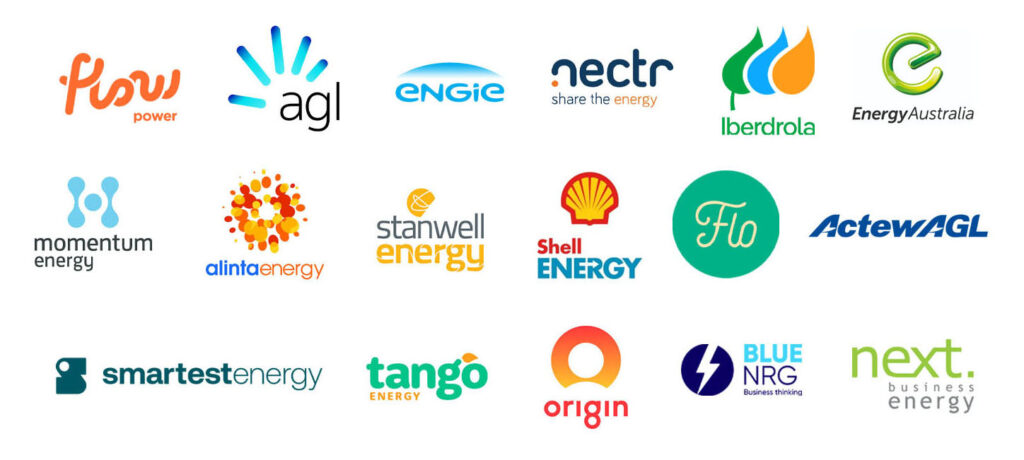A Victoria renewable energy target of 95 percent by 2035 and between 75 and 80 percent emissions reduction, has been set by the Labor Party if it is re-elected next month.
Premier Daniel Andrews announced the new targets hot on the heels of the Queensland Government’s new target of 80 percent by 2035.
The Labor Party currently enjoys a healthy poll lead for the election on November 26 2022.
Labor Government plans to nationalise state energy system if re-elected
The Andrews Government has pledged to nationalise the state energy system by rebooting the State Electricity Commission to take coal out of the energy mix and replace it with renewable energy.
The SEC was first created over 100 years ago and was led by Sir John Monash, before being privatised during the 1990s as part of the Kennett Liberal government’s privatisation of electricity, public transport, gas and water.
The Victoria renewable energy target is lofty
Breaking the proposals down:
- Renewable energy target: The Victoria Renewable Energy Target would lift from 50 percent to 65 percent by 2030. And to 95% by 2035.
- New Emissions Reduction Target: The emissions reduction target will be increased from a 50 percent reduction on 2005 levels to a 75-80 percent reduction by 2035.
- Net Zero Emissions Target: The Victorian Labor Party also has its eyes set on a net zero emissions goal by 2045, five years ahead of the rest of the country and most of the world.
- The Re-establishment of the SEC: Investments of 51 percent of shares in renewable energy projects, thereby owned by Victorian taxpayers.
- Support of Superannuation Funds: A new Labor government would consider super funds as its preferred investment partner for the remaining 49 percent of shares.
The South Australian Government has also indicated that it may consider nationalising some of the state’s energy-generating assets.
The timing of the announcement comes not long after AGL announced that it was bringing forward the closure of its coal-fired Loy Yang A plant by no later than 2035.
As yet, Alinta has not set an early closure date for Loy Yang B and is currently set to operate until 2047.
Many of Australia’s coal generators are bringing closure dates forward and the timeline of coal’s exit from the NEM is accelerating.
Labor proposes to invest up to $20 million to revive the SEC. It will be headquartered in Morwell, the Latrobe Valley, where coal generation is centred.
The strategic positioning of the HQ suggests that Labor wants to transfer workers currently employed in coal generation to renewable energy hubs.
It also points to keeping the state’s energy generation centre of influence in the Latrobe Valley.
The incumbent premier said a Labor Government would arm the revised SEC with an initial $1 billion to deliver 4.5 gigawatts of power generation through renewable energy.
The state would invest directly to control some renewable energy projects, including wind and solar, with a focus expected to be on its ambitious offshore wind targets.
An estimated 20 gigawatts of renewables generation is needed by 2035, which would need to be funded privately alongside the SEC investment.
Some clean energy investors have expressed concern that they may be squeezed out because the SEC.
But Mr Andrews countered claiming state government involvement would send a clear signal.
“Those who want to invest, renewable energy companies with great experience, whether it be Danish companies or Spanish companies or whoever it might be or companies right here, home-grown companies wanting to invest in offshore wind,” he said.
He said that there were already three interested parties including Star of the South, Flotation Energy and Macquarie Group.
Filling the gap left by the closure of Loy Yang A
Under a 10-year plan, the government will hold a controlling interest in an initial rollout of 4.5GW of wind and solar power.
This, says the Labor Party will be more than enough to fill the supply gap left by the closure of Loy Yang A.
The Labor plan does not stop at generation. The SEC will consider all options to provide cheaper, cleaner and more reliable power to Victorians, including becoming a state-run retailer, partnering with ethical retailers or remaining solely in the retail market.
Mr Andrews said:“ They (coal generators) are leaving. They have made their money and they are going, they’re also not particularly reliable.”
“We’ve seen in periods of peak demand, all manner of maintenance that has to be done all manner of breakdowns; it’s not unlike the petrol prices going up every long weekend,” he said.
“A cynic might say it’s in the interests of private companies to have a shortage of supply.”
Energy Minister Lily D’ Ambrosio said the revival of the SEC would ensure that Victorians would benefit from lower energy prices.
She said that 95 percent of renewable energy would end Victoria’s legacy of polluting coal-fired energy.
Victoria’s energy is mostly supplied by heavily polluting brown coal dug straight out of the ground and burned to create steam to power ageing turbines.
She said the plan will slash emissions and support 14,500 jobs.
Labor says the new targets will increase Victoria’s Gross State Product by $9.5 billion and support 59,000 jobs through 2035.
The Labor Government is also proposing $76 million to back offshore wind and establish another government body, Offshore Wind Energy Victoria.
The premier also announced $6 million to create a Wind Worker Training Centre in Melbourne and $2.9 million to place people looking to work in renewable energy.
Six new renewable energy projects approved
The announcement of the new targets comes hot on the heels of six new renewable energy projects in Victoria under the Victoria Renewable Energy Target 2.
The projects bring 623 MW of new renewable generation capacity, delivering up to 365 MW and 600 megawatt-hours (MWh) of new battery energy storage.
They include:
- Derby Solar Project (95 MW with 85 MW/100 MWh storage)
- Fulham Solar Farm & DC Coupled Battery (80 MW with 80 MW/100 MWh storage)
- Kiamal Solar Farm – Stage 2 (150 MW with 150 MW/300 MWh storage)
- Frasers Solar Farm (77 MW)
- Horsham Solar Farm (118.8 MW with 50 MW/100 MWh storage)
- Glenrowan Solar Farm (102 MW)
Generators and suppliers voice reservations against government involvement in energy supply
Woodside Energy is a significant player in supplying gas to the Victorian market. CEO Meg O’Neill voiced reservations against government involvement in the state’s energy supply.
“I’m a believer in the power of free markets,” she said. “Heavy government intervention is a pretty blunt tool to try to deliver an outcome.”
AGL’s Loy Yang A retirement date has been brought forward to 2035, but Alinta Energy’s Loy Yang B is set to continue operations until 2047.
CEO Jeff Dimery said the Labor Party’s plan would cause Loy Yang B to close ahead of schedule, costing jobs.
“We’ve taken strong steps to prepare for the transition, and have one of the most well-advanced renewables and storage project pipelines, but we need to understand more about how the government intends to manage the cost of the expedited transition, protect communities and workers, and support us to invest in the replacement generation required to keep the lights on in the state.”
The Australian Energy Council, representing major energy retailers and generators, was the most strident in her criticism and called it a “retrograde step”.
CEO Sarah McNamara said the surprise announcement contained little detail but would likely chill private investment.
“Publicly-listed energy companies have already written off $11.5 billion of shareholder value due to market uncertainty over the past five years.
This announcement has the potential to further punish shareholders – including mum and dad investors – who have invested in the transition in good faith,” she said.
“Government shouldn’t need to make direct energy investments where the private sector has demonstrated it is ready and willing to do so.”
Ms McNamara said that history showed that the privatisation was a key part of the state’s economic and fiscal recovery from its severe 1990s recession and delivered a $22.5 billion capital benefit.
But the Grattan Institute’s Energy Director Tony Wood has seemingly backed the plan.
He said: “We just have arrived at a position where the ministers whose governments contributed to the problem, have concluded that the markets cannot deliver what they want, someone has to take control and it should be them. They are probably right.”
Do you want to keep up with the latest energy news?
If you want to be updated with all the latest energy sector news, you can sign up for our newsletter or visit our blog section.
Leading Edge Energy – Here to help your business
Leading Edge Energy is an energy consultancy specialising in energy procurement and brokerage.
We exist to help businesses control their energy costs, minimise their dependence on the grid and reduce carbon emissions.
We achieve this by integrating our energy supply contracts expertise with our solar and storage procurement solutions, our energy efficiency project support and our monitoring and reporting solutions.
We have a reputation for our honesty and professionalism and our comprehensive approach to servicing our clients’ specific requirements.
Click here to get started, or follow us on LinkedIn and Facebook.
We source, analyse, compare and rank commercial, industrial and multisite energy quotes. Obligation Free.
Chat with one of our experienced consultants today and get the insights your business needs to help manage the risks associated with volatile electricity and natural gas markets. Our energy procurement service is obligation-free and provides a time-saving way of securing lower energy rates from our panel of energy retailers.















